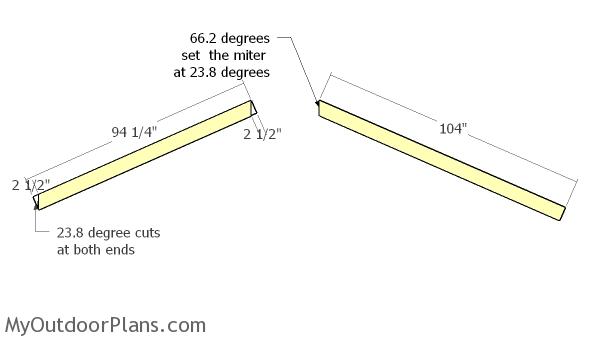

Overall, rafters are a time-tested solution that provide flexibility in the design process. This can also save costs on heavy load deliveries. Because rafters are cut to size at the job site, you don’t have to rely on third-party factories to cut and deliver the materials. Rafters are cut on-site, which means they can be cut to size and adjusted as needed. Insulation, which can be left as-is or covered with drywall, can be rolled in between the rafter beams for better energy efficiency.

The upper area could even be converted into additional living space. Using rafters allows for attic space or cathedral ceilings because there’s open space to develop as the homeowner sees fit. There are several pros to using rafters instead of a truss roof. It’s also impossible to include a spacious attic, which can limit storage potential for the homeowner. Trusses also take multiple people to install, often requiring a forklift to do the heavy lifting.Īnother possible downside of trusses is that they create no room for vaulted ceilings since a bottom piece must provide structural support, meaning the home needs flat ceilings.

One downside is that any errors at the factory can slow the project since you’re not in control of making cuts on-site. The delivery adds to the overall project cost, but trusses are usually less expensive than rafters since they’re made in bulk. Additionally, they’re built off-site in a factory and then delivered to the job site. Trusses use compression and tension to provide strength and stability. The bottom of the rafters are connected by beams spanning the length of the room. Rather than laying rafter boards in the shape of an A-frame, a truss roof design looks like a web of support beams that criss-cross to better distribute the weight of the wood. trusses: What’s the difference?Īn alternative method for building a roof is using a truss system. These are curved at the top (and sometimes the bottom) and are usually used for ornamentation.Įven if you don’t regularly use each of these types of rafters in your projects, it’s helpful to be familiar with them on the rare occasion they’re needed. These rafters are located at the building’s inside corners at a 45-degree angle. These span from the building’s outside corners to the ridge board at a 45-degree angle. These are sometimes used to support a principal rafter. There are also some lesser-used rafters including: Together, they provide enough structural support to serve as the frame of the roof. Common rafters are smaller and placed in between the principal rafters. The principal rafters are the largest pieces used on each side of the roof structure. When building a rafter roof, you’ll typically find two common types used: principal and common rafters.


 0 kommentar(er)
0 kommentar(er)
